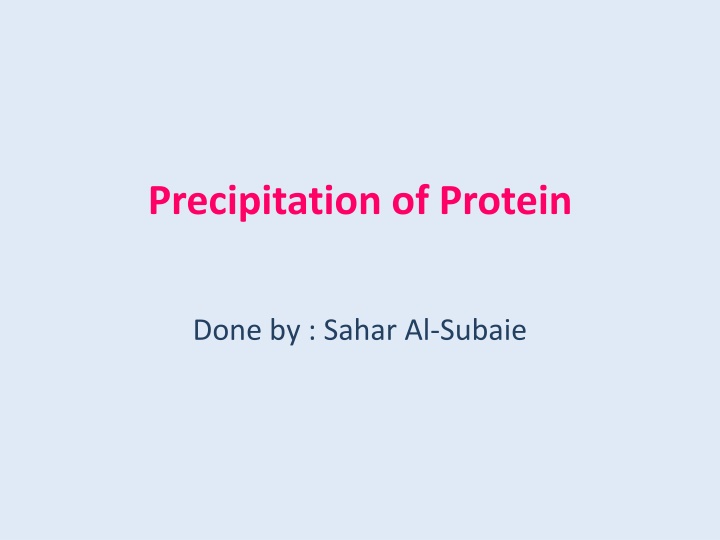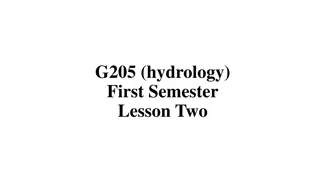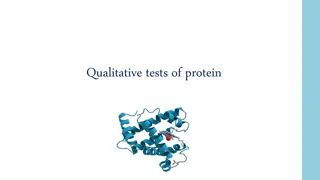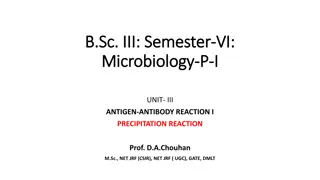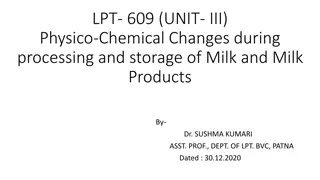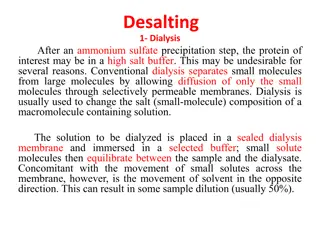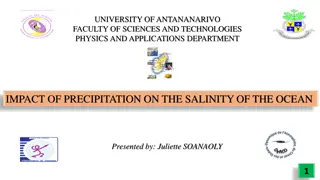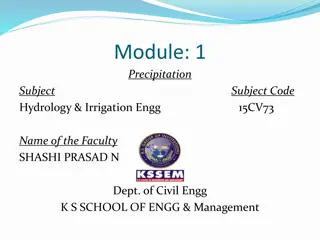Protein Denaturation and Precipitation: Mechanisms and Effects
Protein denaturation is a process where proteins lose their native structure due to external factors like heat, strong acids, or bases. This leads to protein aggregation and precipitation. Different types of denaturation exist, including reversible and irreversible forms. Strong mineral acids can also influence protein precipitation by disrupting bonds. Understanding these processes is crucial in various scientific fields.
Download Presentation

Please find below an Image/Link to download the presentation.
The content on the website is provided AS IS for your information and personal use only. It may not be sold, licensed, or shared on other websites without obtaining consent from the author.If you encounter any issues during the download, it is possible that the publisher has removed the file from their server.
You are allowed to download the files provided on this website for personal or commercial use, subject to the condition that they are used lawfully. All files are the property of their respective owners.
The content on the website is provided AS IS for your information and personal use only. It may not be sold, licensed, or shared on other websites without obtaining consent from the author.
E N D
Presentation Transcript
Precipitation of Protein Done by : Sahar Al-Subaie
Denaturation definition: is a process in which proteins or nucleic acids lose the quaternary structure, tertiary structure and secondary structure which is present in their native state, by application of some external stress or compound such as a strong acid or base, a concentrated inorganic salt, an organic solvent (e.g., alcohol or chloroform), radiation or heat.
Denaturation: When the structures of native proteins are altered by chemical or physical means, the protein molecules tend to agglomerate and precipitate and the protein becomes denaturated.
Denaturation: Protein precipitation is due to a disruption of hydrogen bonds, ionic bonds and sometimes the stronger covalent disulfide bonds
Denaturation types irreversible (excessive heating or extreme PH changes) reversible (treatment with ammonium sulfate).
Influence of Strong Mineral Acids: Proteins are amphiprotic substance (can accept or give protons).
Influence of Strong Mineral Acids: The protein will precipitate because the ionic bonds and hydrogen bonds are disrupted.
The procedure: Test Tube No. 1% egg albumin Con. HCL Con. HNO3 Con. H2SO4 1 2 3 3 ml 2 ml x x 3 ml x 2 ml x 3 ml x x 2 ml
Precipitation by Alkaloidal Reagent Alkaloidal reagents are acids that can combine with alkaloids (Alkaloids are organic bases from plants).
Precipitation by Alkaloidal Reagent Certain acidic reagents (alkaloidal reagents) e.g : Trichloroacetic acid, Tannic acid, Phosphotungstic acid, Picric acid, Sulfosalicylic acid combine with protein to form insoluble protein salts (e.g Protein tannate).
The procedure: Test Tube No. 1%egg albumin 1% urea 1%alanine 10%Trichloroacetic acid 5%aqueous tannic acid 20%phosphotungstic acid 20%sulfosalicylic acid 1 2 3 4 5 x 6 x x 3 ml x x 5 drops 3 ml x x x 3 ml x x x 3 ml x x x 3 ml x 5 drops 3 ml 5 drops x 5 drops x x x x x x 5 drops x x x x x x 5 drops x x
Precipitation by Metallic Salts When heavy metal cations (e.g: Pb, Cu, Hg, Ag) are added to protein solution, the metal ions combine with the negatively charged groups to form insoluble metal ion proteinate.
The procedure: Test Tube No. 1%egg albumin 1%urea 0.2M copper sulfate 0.2M lead acetate 0.2M mercuric chloride 1 2 3 4 x 2 ml 2 ml 2 ml x x x x x 2 ml 5 drops 5 drops x 5 drops x x x x 5 drops x
